Explore Takayama - Japan Travel, Asia
Takayama is a picturesque city that provides a singular fusion of historical charm and scenic beauty, nestled in the heart of Japan's hilly Hida region. Often referred to as "Little Kyoto," Takayama is celebrated for its well-preserved Edo-period streets, traditional wooden houses, and vibrant festivals. This charming location, which is part of Gifu Prefecture, serves as a starting point for discovering the breathtaking scenery and rich cultural legacy of Japan. Whether you're a history buff, culture enthusiast, or outdoor adventurer, Takayama promises an unforgettable experience.
Seeking a tailored Japan adventure? Explore our premium Japan tour offerings here.
Population: Approximately 88,000 in 2019.
Economy: Takayama's economy is mostly driven by woodworking, agriculture, and tourism.
Landmarks: Famous for the Hida Folk Village, Shirakawa-go, and Sanmachi Suji District.
Japan
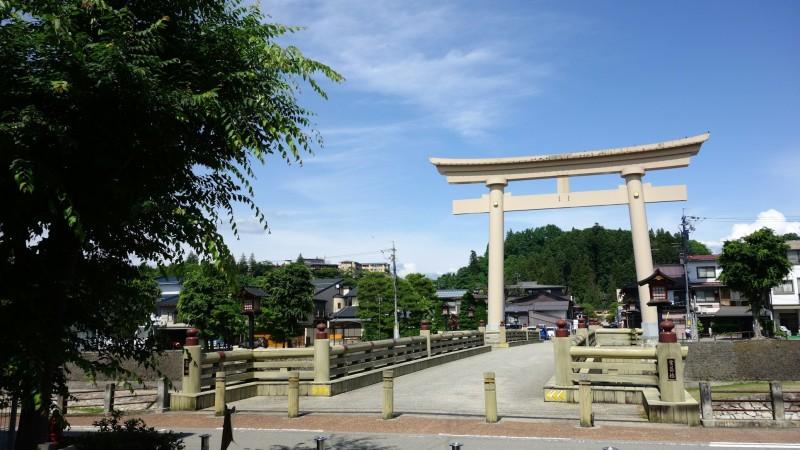
Overview of Takayama
History & Cultural Influence
Takayama's history dates back to the Edo period, which spanned from the 17th to the 19th centuries. The city flourished as a prominent center for trade and craftsmanship, leaving behind a legacy that is still evident today. The historic Sanmachi Suji district, with its traditional wooden buildings and narrow streets, offers a glimpse into Takayama's past. The city is also known for its cultural heritage, including traditional festivals and artisan crafts.
Interaction with The Locals
Takayama, a charming city in Japan's Gifu Prefecture, has a population of approximately 88,000 residents. The local community is known for its warm hospitality and traditional values. Many citizens are involved in preserving Takayama's cultural heritage through crafts, festivals, and local businesses. The city's small-town feel combined with its rich history creates a welcoming atmosphere for visitors.

Takayama Shi, Gifu Prefecture - © Japan Tourism
Top Attractions in Takayama
Takayama offers a variety of attractions that cater to all interests, from historical sites to scenic views. The following places ought to be on your itinerary as must-sees:
- Sanmachi Suji District: The heart of Takayama's historic charm, this preserved area features Edo-period architecture, with narrow streets lined by traditional wooden houses, shops, and cafes. Key highlights include the Takayama Festival Floats Museum, which showcases intricate floats used in the city's famous festivals.
- Hida Folk Village (Hida no Sato): Hida Folk Village is an open-air museum that offers a glimpse into rural life in the Hida region. The village features over 30 traditional farmhouses from the Hida area, each displaying historical farming techniques, crafts, and daily life artifacts. The village's setting amidst lush greenery and picturesque mountains enhances its cultural experience.
- Takayama Jinya: Takayama Jinya is a historical government building that once served as the administrative center of the Takayama region during the Edo period. The complex includes well-preserved rooms and offices where visitors can explore the administrative functions of the time. The building's architectural style and historical exhibits provide valuable insights into Japan's feudal governance and local history.
For nature lovers, Takayama is also a gateway to outdoor adventures:
- Shirakawa-go: Shirakawa-go, a UNESCO World Heritage site famous for its traditional gassho-zukuri farmhouses, is only a short drive from Takayama. These unique, steep-roofed structures are designed to withstand heavy snowfall and offer a glimpse into rural Japanese life. The village is particularly enchanting in winter, when snow blankets the rooftops, creating a postcard-perfect scene.
- Kappa Bridge: Kappa Bridge is a scenic pedestrian bridge spanning the Azusa River in Kamikochi, a popular mountainous area near Takayama. The bridge offers breathtaking views of the river and surrounding peaks, making it a favorite spot for nature lovers and photographers. Kamikochi is also known for its well-maintained hiking trails, which provide access to stunning landscapes, including alpine meadows and crystal-clear lakes.
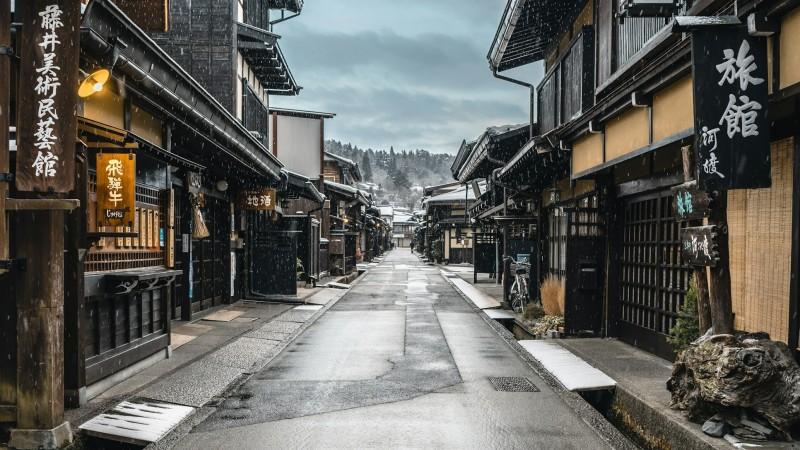
Sanmachi Suji District - © Rogério Toledo
Must-Try Dishes in Takayama
Takayama's cuisine is a delightful exploration of local flavors and traditional Japanese dishes. These dishes provide a taste of Takayama’s diverse and flavorful cuisine, showcasing both traditional and unique regional specialties.
- Hida Beef: Renowned for its tender texture and rich flavor, Hida beef is a highlight of Takayama’s cuisine. Often served as steak, shabu-shabu, or yakiniku, this high-quality Wagyu beef is a must-try for any meat lover.
- Hoba Miso: This unique dish features miso paste grilled on a magnolia leaf, often accompanied by sliced vegetables and Hida beef. The smoky aroma and deep umami flavor make it a local favorite.
- Takayama Ramen: Takayama ramen stands out with its rich, soy-based broth and tender slices of pork. The noodles are typically served with green onions, bamboo shoots, and a soft-boiled egg, offering a hearty and comforting meal.
- Gohei Mochi: A popular street food, Gohei mochi are rice cakes grilled on skewers and coated with a sweet, savory sauce made from miso, soy sauce, and sugar. The crispy exterior and flavorful glaze make this a delightful snack.
- Sakura Ebi Tempura: Sakura ebi, or cherry shrimp, are tiny, flavorful shrimp that are lightly battered and fried. This dish captures the essence of Takayama’s seafood offerings and is often enjoyed as a crunchy appetizer.
- Miso Katsu: A regional twist on the classic katsu, Miso katsu features breaded and fried pork cutlet topped with a rich miso-based sauce. This savory dish combines crispy texture with a flavorful, tangy sauce.
- Hida Soba: Hida soba noodles are made from buckwheat flour, offering a nutty flavor and a satisfying texture. Often served chilled with a dipping sauce or in a hot broth, this dish is a delicious and versatile choice.
- Kurobuta Sausage: Kurobuta, or Berkshire pork, is used to make these high-quality sausages. Known for their rich flavor and juicy texture, Kurobuta sausages are a great snack or side dish in Takayama.
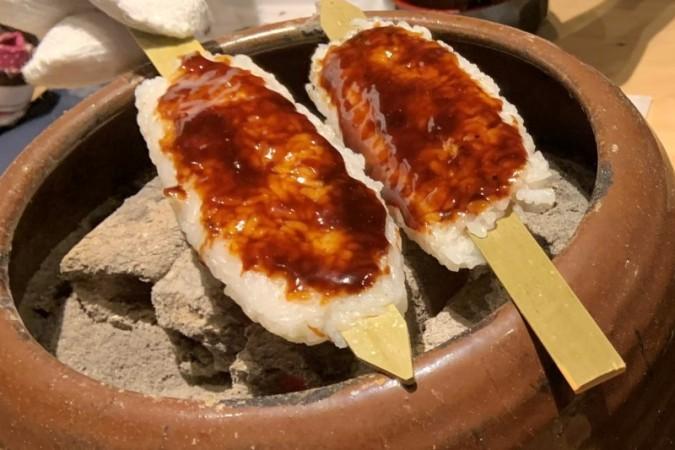
Gohei Mochi - © 西尾市観光協会
Festivals & Local Celebrations
Takayama is renowned for its vibrant festivals and local celebrations, which offer a unique glimpse into Japanese traditions and community spirit:
Takayama Matsuri
Takayama Matsuri, held twice a year in spring and autumn, is one of Japan's most famous festivals. The spring festival (Sanno Matsuri) and the autumn festival (Yatai Matsuri) feature ornate floats known as yatai, decorated with intricate carvings and traditional fabrics. These floats are paraded through the streets accompanied by traditional music and dance performances, creating a lively and colorful spectacle. Both festivals are a feast for the senses, with vibrant colors, lively music, and delicious food stalls lining the streets. Visitors can experience traditional Japanese festival culture and witness the craftsmanship of Takayama’s float makers.
Hida Takayama Art and Crafts Festival
This annual festival celebrates the region's rich artisan heritage. A vast range of traditional Japanese crafts, including lacquerware, ceramics, and carpentry, are on display during this event. Visitors can explore the exhibition by browsing through exhibitions featuring high-quality handcrafted items made by local artisans, participating in hands-on workshops to learn about traditional crafts. These interactive sessions provide an opportunity to try your hand at pottery, weaving, and other local crafts, guided by skilled artisans. And last but not least, purchase unique crafts, such as handcrafted lacquerware and textiles, directly from the artisans.
Takayama Winter Festival
Held in January, the Takayama Winter Festival features a magical display of illuminated floats and winter-themed activities. The festival features illuminated floats adorned with colorful lights, creating a dazzling spectacle against the snowy backdrop. Attendees can enjoy winter-themed activities such as snow sculptures, ice skating, and seasonal performances, all set in a picturesque snowy environment. Food stalls offer a variety of seasonal treats and warming beverages, including local specialties like hot ramen and sweet mochi, making it a perfect event for experiencing the charm of winter in Takayama.
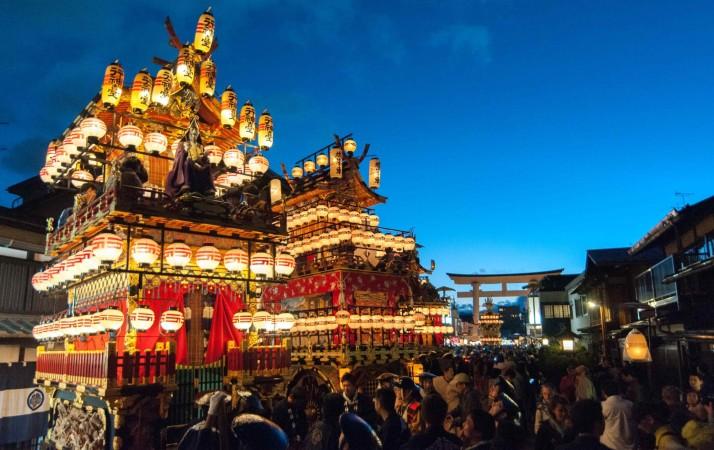
Yatai Matsuri - © Japan Tourism
What to Do in Takayama
Takayama offers a diverse range of activities that cater to various interests:
- Stroll Through Historical Districts: Discover Takayama's historic charm by exploring its well-preserved districts, such as Sanmachi Suji and the Takayama Jinya. Wander through traditional streets lined with Edo-period architecture and visit local museums to learn about the city's rich history.
- Enjoy Outdoor Adventures: Take advantage of Takayama's natural beauty with outdoor activities. Hike the scenic trails of Kamikochi, known for its breathtaking mountain views, or explore the picturesque landscapes of the nearby Okuhida hot springs area.
- Participate in Cultural Experiences: Immerse yourself in Takayama’s culture by joining workshops that showcase traditional Japanese crafts like pottery and lacquerware. Experience local art and craftsmanship first-hand through interactive sessions.
- Explore Local Markets: Visit the Miyagawa Morning Market and other local markets to sample fresh produce, local delicacies, and unique crafts. These vibrant markets offer a taste of Takayama's daily life and are ideal for finding souvenirs.
Looking for more adventures? Dive into Imabari, another famous destination in Japan, with our article here.
Shopping in Takayama
Takayama’s shopping options combine traditional charm with unique finds. Here’s what to explore:
- Morning Markets: Takayama is famous for its morning markets, such as the Miyagawa Market and the Jinya-mae Market. These bustling markets offer fresh produce, local crafts, and delicious street food. It's an excellent opportunity to sample local specialties and purchase unique souvenirs.
- Local Crafts: Explore Takayama’s shops and galleries specializing in traditional crafts. Look for handcrafted items such as Hida lacquerware, which is known for its intricate designs and high quality. Other popular crafts include Hida woodworking and traditional textiles.
- Souvenir Shops: Souvenir shops in Takayama offer a range of keepsakes, from traditional Japanese sweets to unique handmade goods. Popular items include decorative crafts, local sake, and specialty foods. These shops provide a great way to remember your visit.
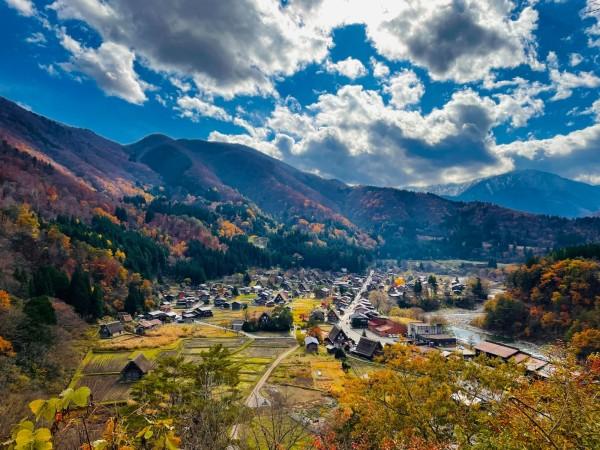
Witness Takayama's natural beauty - © MACHIYA INNS
Weather in Takayama: Best Time to Visit
Takayama experiences a temperate climate with distinct seasons, each offering a unique experience:
Spring in Takayama
Spring in Takayama is delightful, with cherry blossoms (sakura) blooming in April. Temperatures range from 5°C to 20°C (41°F to 68°F), making it a pleasant time for exploring the city’s historic sites and enjoying outdoor activities. The mild weather is ideal for visiting festivals and strolling through the picturesque streets.
Summer in Takayama
Summer in Takayama is warm and humid, with temperatures reaching 25°C to 30°C (77°F to 86°F). July and August can be quite hot, but the summer season also brings lush greenery and vibrant festivals. The occasional rain provides relief from the heat, making it a good time for hiking and outdoor adventures.
Autumn in Takayama
Autumn is one of the most beautiful times to visit Takayama. Temperatures range from 10°C to 25°C (50°F to 77°F), and the foliage turns stunning shades of red, orange, and yellow. This season is perfect for enjoying the city’s festivals and outdoor activities against a backdrop of colorful leaves.
Winter in Takayama
Winter in Takayama is cold, with temperatures ranging from -5°C to 5°C (23°F to 41°F). Snowfall is common, creating a magical winter landscape. The chilly weather is ideal for cozying up in traditional hot springs and enjoying the winter festivals and snow-covered scenery.
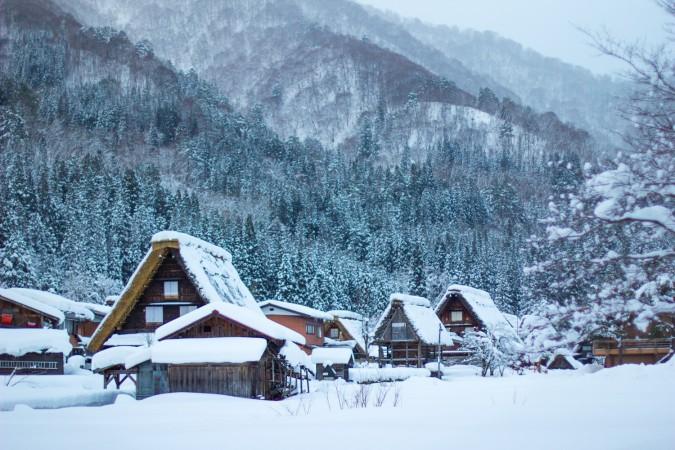
Winter in Takayama - © Japan Tourism
Culture Etiquette in Takayama
Being aware of the customs of the area adds to your enjoyment of Takayama and demonstrates respect for it:
- Respect Local Traditions: When visiting temples, shrines, or historical sites, dress modestly and maintain a quiet demeanor. Follow local customs such as bowing when greeting and removing shoes before entering certain areas.
- Dining Etiquette: In restaurants and eateries, it’s customary to say "itadakimasu" before starting your meal and "gochisousama deshita" after finishing. Avoid speaking loudly or making a fuss while eating, and be mindful of chopstick etiquette, such as not sticking them upright in rice.
- Public Behavior: Maintain a respectful attitude in public places. Speaking softly and keeping your phone on silent are appreciated. It’s also polite to follow local queuing practices and avoid public displays of affection.
- Onsen Culture: Takayama is well-known for its onsen, or hot springs, where proper bathing behavior is expected. Before entering the communal baths, it is customary to thoroughly wash and rinse your body at designated stations. Swimwear is not permitted, and guests should enter the baths quietly and respectfully.
- Traditional Japanese Tea Ceremony: The tea ceremony, or chanoyu, is a revered custom in Takayama. This ritualized practice involves the preparation and consumption of matcha (powdered green tea) with a focus on mindfulness and respect.
Essential Travel Information
Getting Around Takayama
Navigating Takayama is convenient with a variety of transportation options:
- Local Buses: Takayama’s city buses provide access to major attractions and surrounding areas. The Hida Bus network connects Takayama to popular destinations like Shirakawa-go and Kamikochi.
- Walking and Bicycling: The compact city center makes walking or renting a bicycle a great way to explore Takayama. Many attractions, shops, and restaurants are within walking distance, and bicycles are available for rent at various locations.
- Taxis: Taxis are readily available and provide a convenient way to travel around the city, especially if you have luggage or are visiting locations outside the central area.
- Trains: Takayama is accessible by train from major cities like Nagoya and Tokyo. The Takayama Line offers scenic rides through the countryside, providing a relaxing journey to the city.
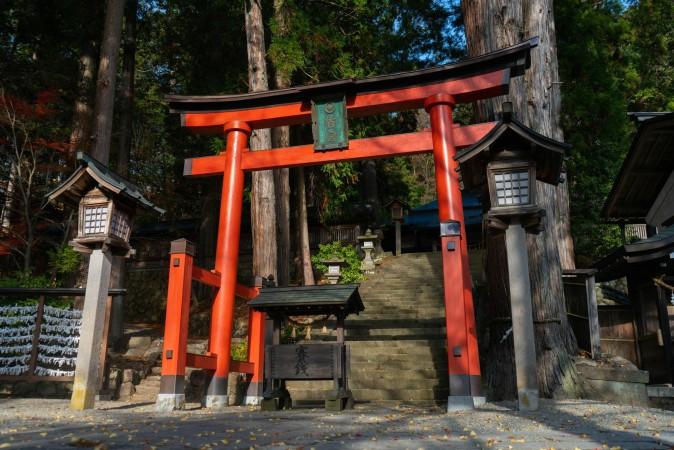
Experience the peacefulness in Takayama's shrine - © Lucas Calloch (@dreiimos)
ATM & Banking Services
Accessing money and banking services in Takayama is convenient and straightforward. ATMs are widely available throughout the city, including at convenience stores, and accept international credit and debit cards for easy cash withdrawals. Look for machines with English instructions for ease of use. Banking services, including currency exchange and international transfers, are offered at various local banks.
Are you interested in Tochigi Prefecture? Discover more about this unique destination with our article here.
Where to Stay in Takayama
Takayama has a variety of lodging choices to accommodate various tastes and price ranges. For an authentic Japanese experience, staying in a traditional ryokan with tatami mats, futon bedding, and onsen access is highly recommended. The city also has a range of hotels, from luxury to budget, providing comfortable stays with convenient locations and amenities. Budget travelers can find affordable and friendly options in guesthouses and hostels, which often offer a social environment and easy access to local attractions. Additionally, minpaku (private lodgings) provide a home-like stay and the opportunity to interact with local hosts, offering a unique way to experience Takayama’s culture and hospitality.
Articles for you

Explore Yala National Park - Sri Lanka Travel, Asia
Tucked away in Sri Lanka’s southeastern corner, Yala National Park is where wild nature meets deep tradition. Known worldwide for its leopard population, the park is also home to elephants, sloth bears, crocodiles, and hundreds of bird species. Beyond wildlife, Yala opens doors to a cultural landscape dotted with ancient temples, Buddhist ruins, and coastal villages. For travelers seeking more than just a safari, Yala offers a chance to explore eco-tourism, local communities, and sacred heritage sites.
Population: The Yala National Park area doesn’t have a human population.
Economy: The economy around Yala National Park thrives on a blend of eco-tourism, agriculture, and local services. Safari tours, eco-lodges, and cultural experiences drive steady income for nearby towns like Tissamaharama and Kataragama, supporting thousands of families.
Landmarks: Famous for Block I of Yala and wildlife encounters, including elephants, sloth bears, crocodiles, and exotic bird species.

Explore Galle - Sri Lanka Travel, Asia
Nestled on Sri Lanka’s southern coastline, Galle is a vibrant city where history meets the sea. Its cobbled streets, colonial architecture, and serene beaches make it a must-visit destination for travelers seeking a blend of culture, adventure, and relaxation. A UNESCO World Heritage site, Galle captivates visitors with its Dutch Fort, bustling markets, and friendly locals. Whether you’re exploring the ramparts at sunset or savoring fresh seafood by the shore, Galle promises an unforgettable journey into Sri Lanka’s heritage.
Population: Approximately 113,000 in 2023.
Economy: Galle’s economy thrives on tourism, trade, and fisheries. The city’s historic fort, colonial architecture, and coastal charm draw thousands of international visitors each year, making tourism its main economic driver. Fishing remains vital for local livelihoods, supplying fresh seafood across the region.
Landmarks: Famous for the Galle Fort, Dutch Reformed Church & Maritime Museum, and Unawatuna Beach.

Explore Bentota - Sri Lanka Travel, Asia
Nestled along Sri Lanka’s southwestern coast, Bentota is a tropical paradise that blends golden beaches, vibrant culture, and thrilling adventures. Famous for its calm waters, luxury resorts, and scenic river estuary, Bentota has become a top destination for travelers seeking both relaxation and authentic experiences. From serene beach walks at sunrise to adrenaline-pumping water sports, this coastal town offers a perfect balance of leisure and exploration. With its proximity to Colombo and Galle, Bentota is easy to reach, making it an ideal stop for both short escapes and extended holidays.
Population: Approximately 37,000 in 2023.
Economy: Bentota’s economy thrives mainly on tourism, which drives local businesses such as hotels, restaurants, and wellness retreats. The town also benefits from fishing, coconut cultivation, and handicrafts like wood carving and batik textiles. Many residents rely on the growing demand for water sports and Ayurvedic treatments, making tourism the backbone of both income and employment in the area.
Landmarks: Famous for Bentota Beach, Bentota River Safari, and Kande Vihara Temple.

Explore Mirissa - Sri Lanka Travel, Asia
Mirissa is a charming coastal town on Sri Lanka’s southern shoreline. Known for its golden beaches, turquoise waters, and vibrant marine life, it has become a must-visit stop for travelers exploring the island. Many come for whale watching, surfing, and sunset views at Coconut Tree Hill, but Mirissa offers much more than postcard beauty. The fishing boats you see anchored by the bay carry generations of stories. Local traditions, delicious cuisine, and a laid-back rhythm of life shape every visitor’s experience.
Population: Approximately 4,700 in 2023.
Economy: Mirissa’s economy is largely shaped by its coastal location. Fishing has long been the backbone of local livelihoods, with generations relying on the Indian Ocean for income. In recent decades, tourism has become the main driver of growth, thanks to whale watching, surfing, and beachside hospitality.
Landmarks: Famous for Mirissa Beach, Coconut Tree Hill, and Parrot Rock Bridge.

Explore Nuwara Eliya - Sri Lanka Travel, Asia
Tucked away in the Central Highlands of Sri Lanka, Nuwara Eliya is often called “Little England”. With its rolling tea plantations, cool misty mornings, and colonial charm, this mountain town feels like a step into another world. Travelers come here to breathe fresh air, walk through flower gardens, sip the finest Ceylon Tea, and enjoy a pace of life far from the island’s busy cities. Whether you’re drawn by scenic landscapes, heritage architecture, or the warmth of its people, Nuwara Eliya is a destination that blends nature, culture, and history in perfect harmony.
Population: Approximately 781,000 in 2023.
Economy: Nuwara Eliya’s economy thrives mainly on tea production, as it sits in the heart of Sri Lanka’s central highlands, famous worldwide for Ceylon Tea. The city also benefits from a growing tourism industry, attracting visitors with its colonial charm, cool climate, and scenic landscapes.
Landmarks: Famous for Gregory Lake, Hakgala Botanical Garden, and Victoria Park.

Explore Sukau - Malaysia Travel, Asia
Nestled on the banks of the Kinabatangan River in Sabah, Malaysian Borneo, Sukau is a destination where wildlife, culture, and conservation come together. Known as one of Asia’s top spots for river safaris and eco-tourism, this quiet village offers a front-row seat to encounters with Bornean orangutans, pygmy elephants, proboscis monkeys, and exotic birdlife.
Population: Approximately 1,400 in 2019.
Economy: Sukau’s economy is shaped by its riverine location and natural resources. Traditionally, the Orang Sungai community relied on fishing, small-scale farming, and forest gathering for their livelihood. Today, the village has shifted toward eco-tourism, with river cruises, jungle trekking, and homestays providing income.
Landmarks: Famous for the Kinabatangan River cruises, Gomantong Caves, and Ox-bow lakes and wetlands.
